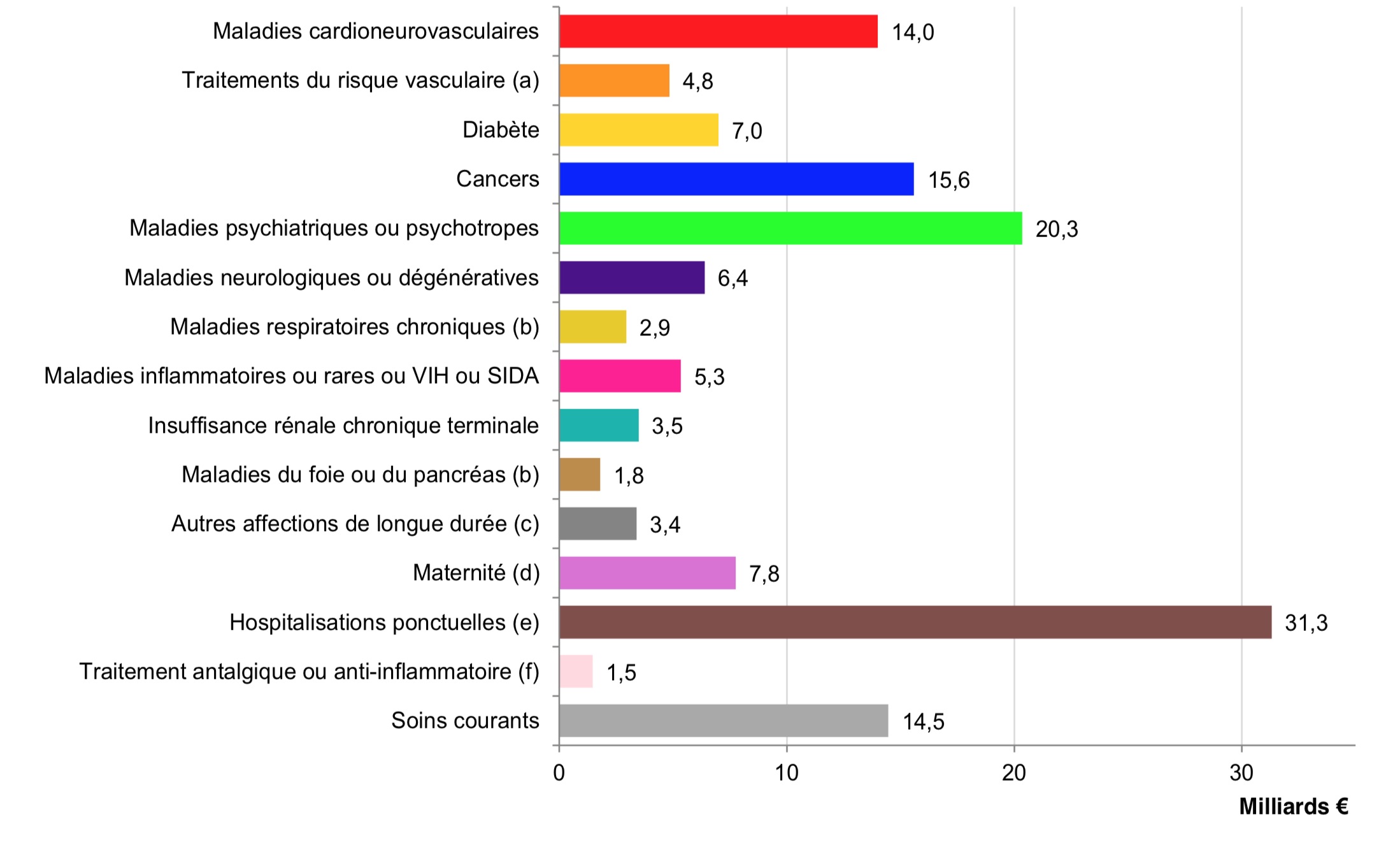Psychiatric illnesses, cancers and cardio-neurovascular illnesses are those that cost Social Security the most.

Behind occasional hospitalizations are psychiatric illnesses, cancers and cardiovascular diseases which cost Social Security the most, as indicated by its new cartography designed over a period of 6 years. These three categories are also those whose budget has increased the most, with cancer this time far ahead.
 Source: @Social Security.
Source: @Social Security.
The scourge of cancer
In 2017, expenditure related to cancers in the active phase represented €14 billion, i.e. 10% of all expenditure studied by the mapping. This budget increased by +2.8% per year over the period 2012-2017. In comparison, this increase was 2.3% per year, all pathologies combined, between 2012 and 2017.
“Lung cancer is a major public health issue, both because of the large number of people concerned (in 2017, 79,700 patients in the active phase of treatment) and the increase in cases of female cancers (+38% versus +12% for men between 2012 and 2017), witnesses of the continuous increase in smoking among women for 50 years”, specify the experts in a note. Lung cancer also represents a significant economic challenge, with total reimbursed expenditure of €1.6 billion in 2017, or €20,050 on average per year and per patient.
On the other hand, the expenditure per HIV patient has fallen since 2012, when it was on average 11,000 euros. “This is the result in particular of a significant drop in spending on the ‘medication’ item (-11%) between 2016 and 2017, following price reductions and the arrival of generics”, write the analysts. The care provided represented an overall expenditure of €1.3 billion in 2017, i.e. €9,678 on average per patient and per year.
20 million people seek care
Other lasting trends are emerging, such as the growing number of chronically ill patients (+1.2 million) or the financial burden of therapeutic innovations, particularly for new diabetes treatments.
In 2017, the mapping made it possible to identify, among the 57.6 million beneficiaries of the general scheme, 20 million people who had recourse to care related to the management of a specific pathology, very often chronic (diabetes , chronic end-stage renal failure, chronic respiratory disease) or due to long-term specific drug treatment (psychotropics, preventive treatment for cardiovascular risk).
Taking into account other situations (chronic taking of an analgesic or anti-inflammatory treatment, maternity, occasional hospitalization unrelated to one of the specific pathologies), nearly 26 million policyholders (45%) benefited of using the health care system.
.














